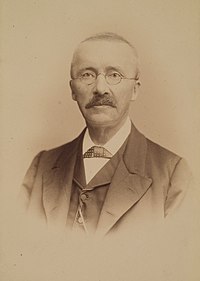
Photo from wikipedia
The Trojan war occupies an important place in Greek mythology. Homer describes this in detail in his epic works of "The Iliad" and "The Odyssey." The ancient town of Troy… Click to show full abstract
The Trojan war occupies an important place in Greek mythology. Homer describes this in detail in his epic works of "The Iliad" and "The Odyssey." The ancient town of Troy is located south of the Dardanelles Strait in Turkey. Until the late nineteenth century, scientists thought that the Trojan War was a legend. German businessman and amateur archaeologist Heinrich Schliemann (1822-1890) began excavations in Troy. The Turkish Empire (Ottoman Empire) granted excavation permission in 1871 on the condition that the artifacts discovered would be preserved and exhibited. Schliemann found "the treasure of the Trojan king Priam" in 1873. He smuggled the treasure to Athens. In 1874, the Ottoman government discovered this and went after the treasure. They sued Schliemann in Athens. According to archaeologists, the treasure dates back to 2600-2400 BCE. The horde that Schliemann found could not have belonged to the Trojan King Priam. It was during this time that Schliemann met Rudolf Virchow (1821-1902). Virchow was interested in anthropology and prehistory. The Turkish state granted Schliemann new permission to conduct excavations. Virchow stayed in Troy for a month in 1879 as an excavation site physician. He provided health care services to the excavation workers and local people and made observations. Virchow came to Troy once again in March 1890 to attend the second Trojan conference organized by Schliemann. Virchow was also an influential politician in Berlin. He was a member of the Berlin City Council. Thanks to the relations established with Chancellor Bismarck and Kaiser Wilhelm, Virchow ensured that the Treasure of Priam would be permanently transferred to Berlin from London (it is currently at the Victoria and Albert Museum), where it was temporarily exhibited. Trojan treasures were exhibited in the Ethnological Museum (Völkerkundemuseum) and in the Martin-Gropius Bau (formerly Kunstgewerbemuseum -The Decorative Arts Museum) until 1945. After the Soviet Army entered Berlin following the Second World War, the treasure was lost. It was discovered in 1994 that the treasure was at the Pushkin Museum.
Journal Title: International journal of surgical pathology
Year Published: 2023
Link to full text (if available)
Share on Social Media: Sign Up to like & get
recommendations!